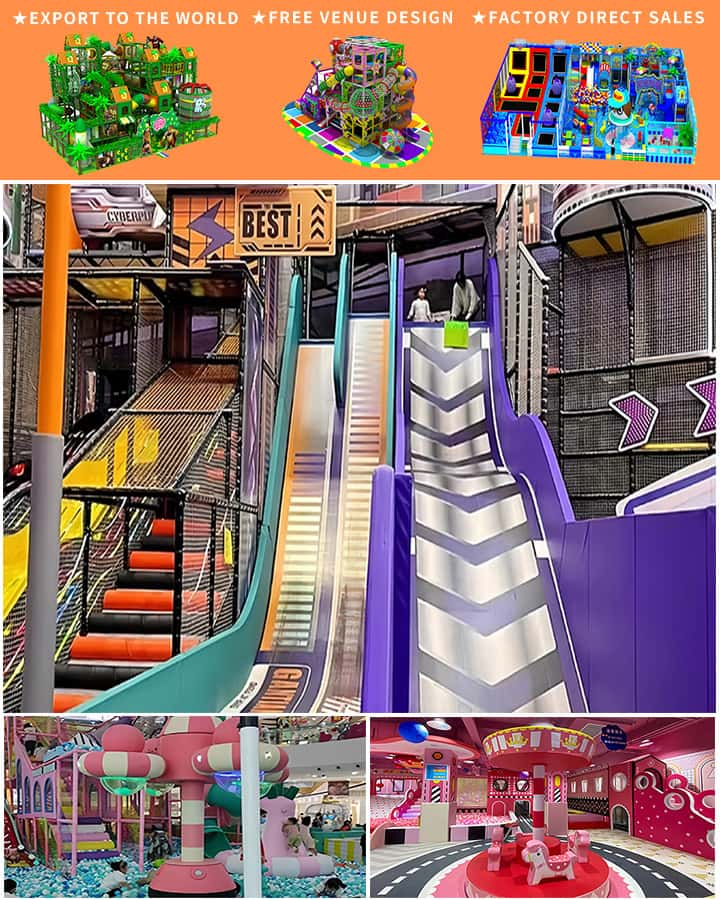In today’s rapidly evolving world, the design and functionality of indoor playgrounds are becoming increasingly important. With the advent of cutting-edge technology, designers now have access to sophisticated indoor playground design software that revolutionizes the process from conceptualization to execution. This article explores how these innovative tools are transforming the way we create safe, stimulating, and imaginative play environments for children of all ages.
The Evolution of Indoor Playgrounds
Traditionally, designing an indoor playground required a great deal of time, effort, and resources. Physical blueprints and models were the norm, and making changes often meant starting from scratch. This not only slowed down the design process but also limited creativity and flexibility. Today, thanks to advanced indoor playground design software, this landscape has changed dramatically.
Key Features of Modern Design Software
1. 3D Modeling and Visualization: One of the standout features of contemporary design software is its ability to create detailed 3D models. Designers can visualize every aspect of the playground, from slides and climbing frames to interactive installations and themed areas. This level of detail helps in making informed decisions and presenting ideas clearly to clients or stakeholders.
2. Real-Time Modifications:
 Another advantage of using digital design software is the ease of making real-time modifications. Whether it’s adjusting the size, shape, or positioning of equipment, designers can see instant results and make necessary tweaks without starting over. This significantly speeds up the design process and encourages experimentation with different layouts and themes.
Another advantage of using digital design software is the ease of making real-time modifications. Whether it’s adjusting the size, shape, or positioning of equipment, designers can see instant results and make necessary tweaks without starting over. This significantly speeds up the design process and encourages experimentation with different layouts and themes.
3. Safety Compliance Checks: Safety is paramount in playground design, and modern software often includes features to ensure compliance with safety regulations. These tools automatically check dimensions, materials, and structural integrity against established standards, reducing the risk of errors and ensuring a safer final product.
Enhancing User Experience
1. Interactive Elements: Indoor playground design software enables the incorporation of interactive elements that can enrich the play experience. From digital games to augmented reality components, these features engage children in new and exciting ways, fostering physical activity and learning through play.
2. Customization: Every playground is unique, and design software allows for extensive customization to meet specific needs and preferences. Whether designing for a small community center or a large commercial facility, the software adapts to various scales and requirements, ensuring a tailored approach.
3. Sustainability: Sustainability is another growing concern, and many design programs include options for using eco-friendly materials and energy-efficient designs. This not only benefits the environment but also aligns with the values of many organizations and families.
Collaborative Efforts
Designing an indoor playground is often a collaborative effort involving architects, engineers, and clients. Indoor playground design software facilitates this collaboration by providing a centralized platform where all stakeholders can contribute and provide feedback. This streamlines communication, ensures everyone is on the same page, and ultimately leads to better outcomes.
Conclusion
The advent of indoor playground design software marks a significant advancement in the field of play space creation. By offering powerful tools for 3D modeling, real-time adjustments, safety checks, and more, this technology empowers designers to push the boundaries of imagination while maintaining high standards of safety and sustainability. As we continue to innovate and refine these tools, the future of indoor playgrounds looks brighter and more exciting than ever before.




